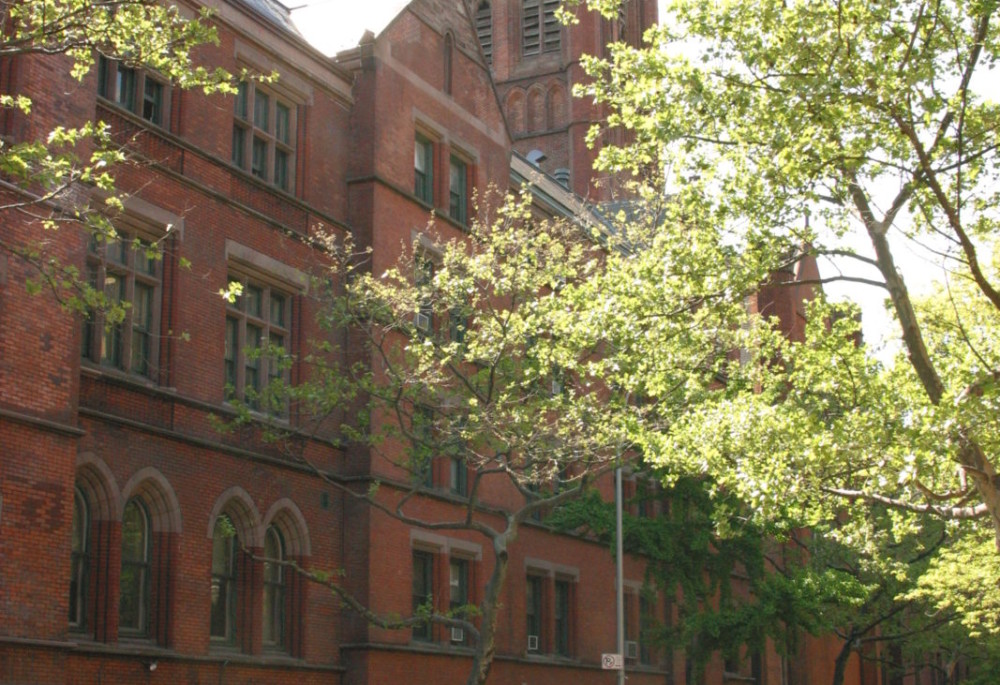General Theological Seminary
440 West 21st Street
1827 and 1836; 1883-1902
Charles Coolidge Haight
The Seminary stands on land donated by Clement Clarke Moore, and originally included just the 1827 East Building, since demolished, and the matching 1836 West Building, which remains. Moore hoped the open campus would double as a value-enhancing town square, like Washington Square and Gramercy Park; it was in fact long called “Chelsea Square.” A seminary graduate, Eugene Augustus Hoffman, was installed as the first dean in 1879. Backed by his personal wealth, he began an ambitious building program known as the “Grand Design.” His architect Haight took inspiration from the Collegiate Gothic campuses of England and their quadrangles as well as the image of a medieval cloister. He built along three sides of the Seminary block’s perimeter, shielding its grounds from Ninth and Tenth Avenues and 21st Street, and preserving much of Moore’s original public-square intent. Left open on the south, Haight’s plan admitted sunlight and allowed the front gardens of the rowhouses across 20th Street—planned via a ten-foot setback laid out by Clement Clark Moore—to contribute their greenery to the leafy oasis of the Seminary. Haight’s design and the rowhouses opposite create a modern, urban version of an encircling cloister. The Seminary’s central, south-facing chapel occupies the traditional place of a medieval cloister church. Its bell tower, like St. Peter’s Church, is modeled on Magdalen Tower at Oxford. Despite unfortunate encroachments on the Seminary’s open space by luxury apartment construction, the block remains uniquely gracious and the heart of Chelsea. General Theological Seminary is located in the Chelsea Historic District and listed on the State and National Register of Historic Places.
